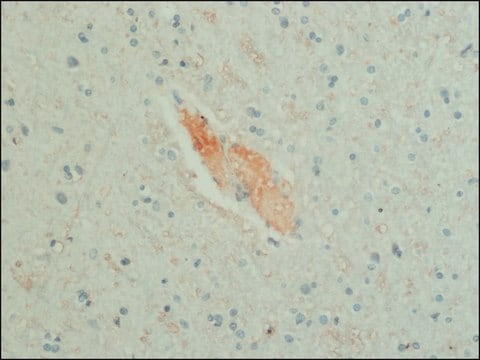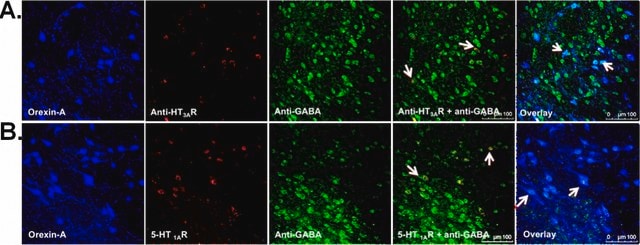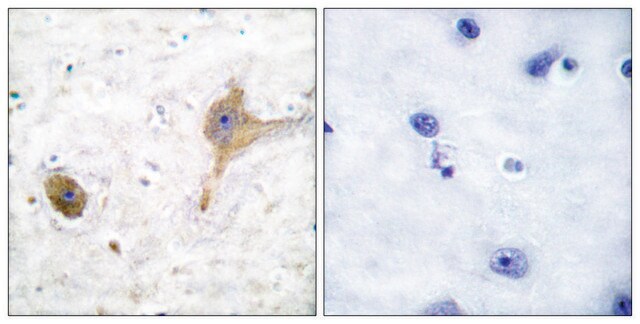A2052
Anti-GABA antibody produced in rabbit
affinity isolated antibody, buffered aqueous solution
Synonym(s):
Anti Gaba, Anti Gaba Antibody, Anti-Gaba, GABA Antibody - Anti-GABA antibody produced in rabbit, Gaba Antibody, Anti-γ-Aminobutyric acid
About This Item
Recommended Products
biological source
rabbit
Quality Level
conjugate
unconjugated
antibody form
affinity isolated antibody
antibody product type
primary antibodies
clone
polyclonal
form
buffered aqueous solution
species reactivity
rat, Drosophila, wide range
packaging
antibody small pack of 25 μL
technique(s)
dot blot: 1:10,000
immunohistochemistry (formalin-fixed, paraffin-embedded sections): 2.5 μg/mL using rat cerebellum
shipped in
dry ice
storage temp.
−20°C
target post-translational modification
unmodified
Gene Information
rat ... Gabra1(29705)
Related Categories
General description
GABA (γ-aminobutyric acid) is a multifunctional molecule found in several organisms, from prokaryotes to vertebrates. It is present in non-nervous structures, such as peripheral nervous and endocrine systems. GABA is formed following decarboxylation of glutamic acid by the enzyme glutamic acid decarboxylase (GAD).
Immunogen
Application
Biochem/physiol Actions
Physical form
Storage and Stability
Disclaimer
Not finding the right product?
Try our Product Selector Tool.
Storage Class Code
10 - Combustible liquids
WGK
nwg
Flash Point(F)
Not applicable
Flash Point(C)
Not applicable
Certificates of Analysis (COA)
Search for Certificates of Analysis (COA) by entering the products Lot/Batch Number. Lot and Batch Numbers can be found on a product’s label following the words ‘Lot’ or ‘Batch’.
Already Own This Product?
Find documentation for the products that you have recently purchased in the Document Library.
Customers Also Viewed
Our team of scientists has experience in all areas of research including Life Science, Material Science, Chemical Synthesis, Chromatography, Analytical and many others.
Contact Technical Service













